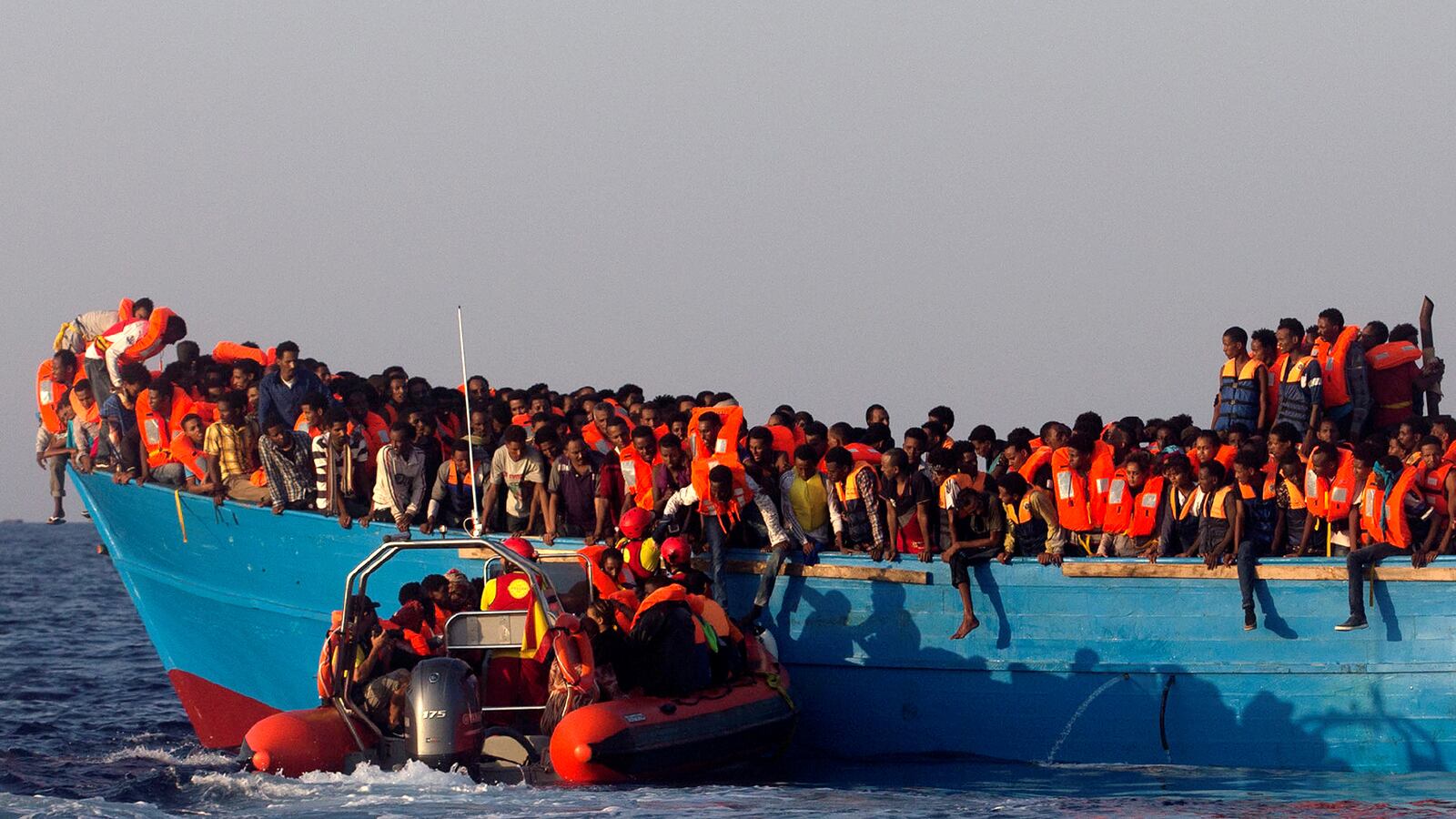ROME—The ongoing migrant boat crisis, which has lured more than 600,000 mostly sub-Saharan Africans to Italy and killed more than 10,000 since 2014, has reached a crucial turning point.
Over the weekend, three of the eight major nongovernmental organizations with migrant rescue operations announced they would suspend their search and rescue operations out of fear the Libyan coast guard would shoot at them. The suspensions come at a time when migrant arrivals in Italy have dropped around 70 percent compared to last year.
Make no mistake, the Libyans’ threat is real. In July, they fired shots in the air over a Spanish rescue vessel, warning it away from their territorial waters. And late last week, Libya’s navy announced that it would establish its own search and rescue zone off its international waters. Any smuggler boats with migrants would be “rescued” and taken back to Libyan ports. Likewise, any foreign vessels breaching that new search and rescue perimeter would be seen as aggressors and dealt with accordingly, Libyan coast guard spokesman Ayoub Qassem told Reuters.
The Italian Maritime Rescue Coordination Center in Rome, which coordinates all distress calls and rescues in the Mediterranean, warned the rescue boats of “increased security risks” at the hands of the Libyan navy. In other words, they couldn’t promise that the Libyans wouldn’t shoot their ships.
In exchange for stopping the flow of smugglers’ boats, Libya has been promised a series of rewards, from investments in infrastructure to basic credibility for its fragile officially recognized government. In fact, not even a day passed between the first announcement of an NGO suspending its mission and Italy’s seeming call for funds to help the fragmented state.
“We need a significant, I repeat a significant European economic investment in Libya and in Africa,” Italy’s interior minister, Angelino Alfano, said on Sunday, calling on Europe to reward Libya for its part in stemming the flow of people into Italy.
The crackdown on migration from the Libyan side in exchange for economic rewards is highly reminiscent of a similar deal Italy’s former prime minister, Silvio Berlusconi, made with Libya’s former ruler, Muammar Gaddafi, in 2008 when Gaddafi had threatened to “open the spigot” and “turn Europe black” if Europe did not take him seriously.
Italy, then as now, was on the front line of the crisis and promised investments of around €200 million a year into the country. So pleased were the Libyans that they watermarked Berlusconi’s photo in their passport pages. And the flow of African migrants into Europe stopped quite abruptly, almost exactly as it has now. When Gaddafi was deposed and later killed, the migrant flows picked up again.
Just as they were a decade ago, Libya and Italy have been under increased pressure from Europe to do their part to stem the flow of migrants. And, borrowing a page from the history books, Italy once again dangled a carrot to get Libya to cooperate, a move likely made even more urgent for Rome by the fact that Italy will go to the polls in early 2017 to elect a new leader.
In May, Italy gave the Libyan coast guard four repaired patrol boats and helped train their crews for search and rescue missions. In early August, Italy sent two warships to aid the Libyan coast guard in stopping the migrant boats. On Sunday, Alfano applauded the Libyan threats toward the NGO ships, calling the move “an end to the Wild West of migration.”
The new measures prompted Doctors Without Borders, Save the Children, and German Sea Eye to at least temporarily ground their rescue vessels. Several others have had to scale back their operations and change their strategy to stay clear of the Libyan off-limits zone, which means migrants have little chance of getting through alive.
“The recent developments represent another worrying element of an increasingly hostile environment for lifesaving rescue operations,” Brice de le Vingne, Doctors Without Borders’ director of operations said in a statement. “European states and Libyan authorities are jointly implementing a blockade on the ability of people to seek safety. This is an unacceptable assault on people’s lives and dignity.”
The threats toward the NGOs, coupled with a new code of conduct established by the Italian government that requires the NGO boats to allow armed Italian officials onboard, is working to get the rescue ships out of the water, though that does not necessarily equate to stopping smuggler boats from leaving Libyan shores. The International Office for Migration estimates that more than half a million people are currently in Libya hoping to get to Europe by sea. With fewer charity boats to rescue them, there will surely be an increase in fatalities at sea, since smugglers will undoubtedly find it hard to give up their lucrative business.
Those migrants who are “rescued” by the Libyan authorities are put into inhumane detention centers run by militia groups where they face torture, slavery, and rape. Bullet wounds and unplanned pregnancy were common among those rescued at sea who spent any time at all in Libya. The United Nations Refugee Agency UNHCR special envoy for the Central Mediterranean route Vincent Cochetel called the Libyan detention centers “just prisons, some controlled by the authorities, some by militants and traffickers” with “terrible conditions to which all migrants who disembark on the Libyan coasts are subjected.”
Despite the dramatic change in course, the migrants are clearly still migrating. Last week, a rubber dingy with African migrants landed on a tourist beach in Spain, which has seen a four-fold increase in migrant arrivals since those to Italy started decreasing. With so many people on the move, solving one problem almost certainly creates another.






